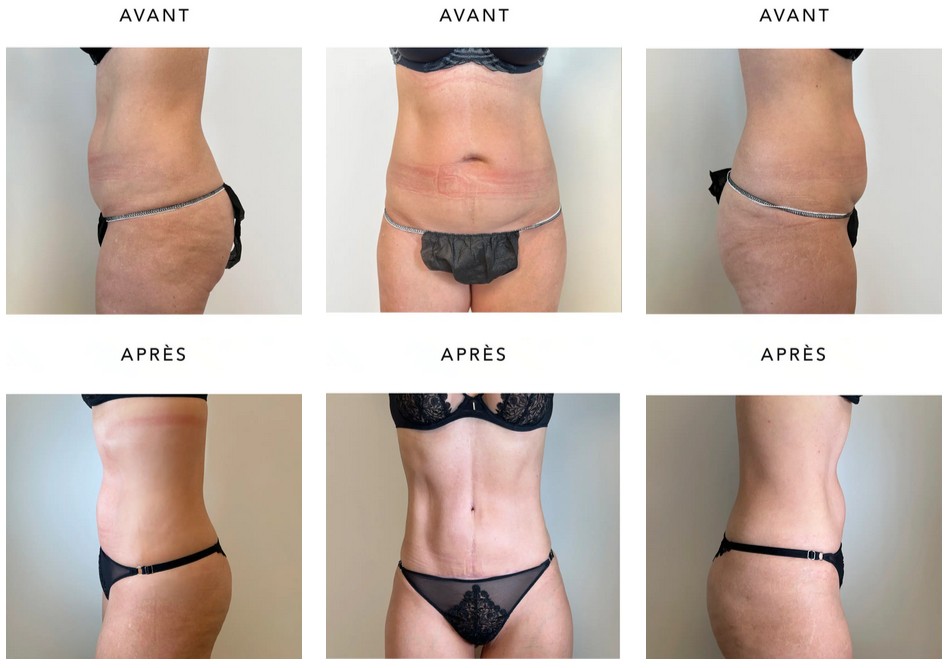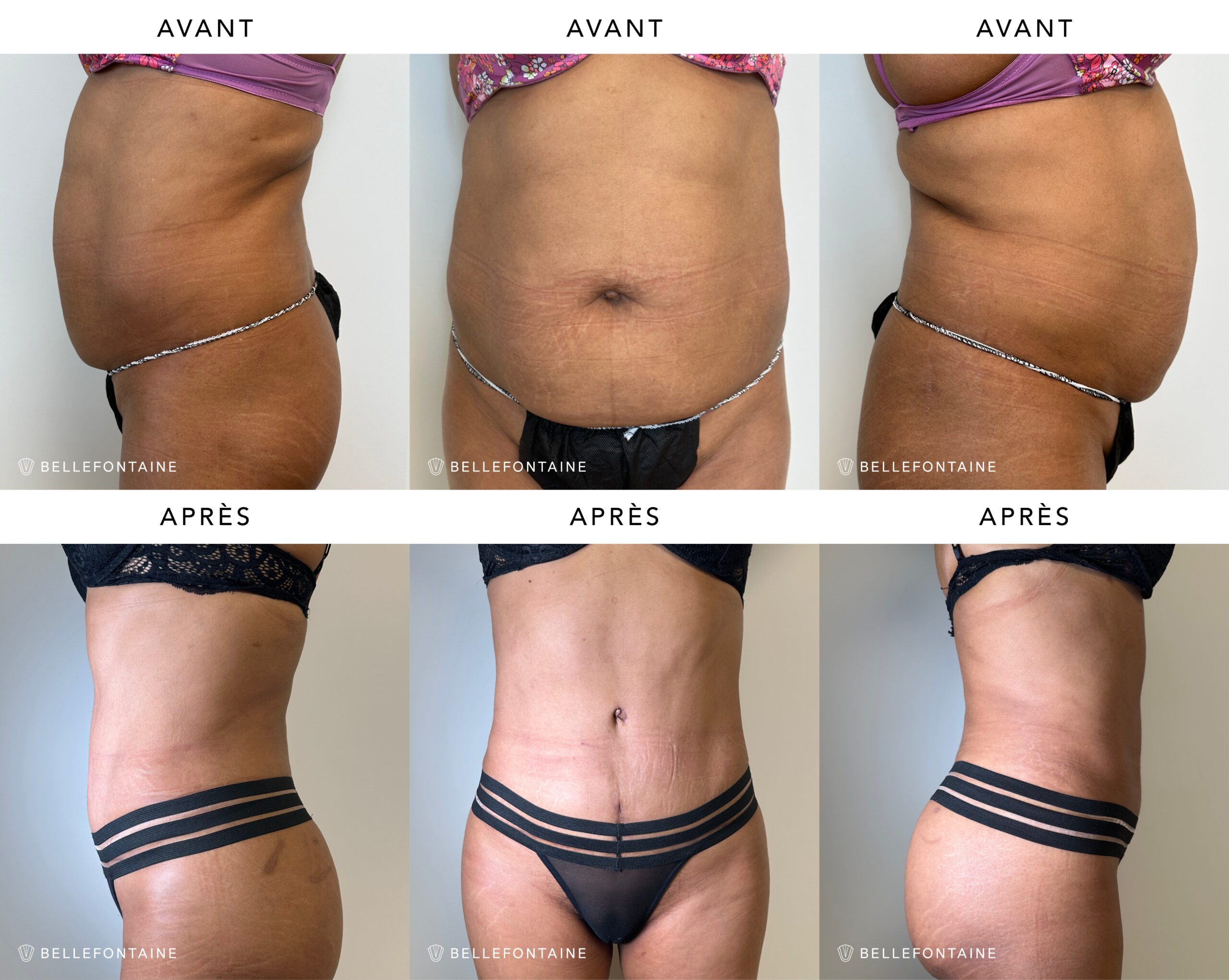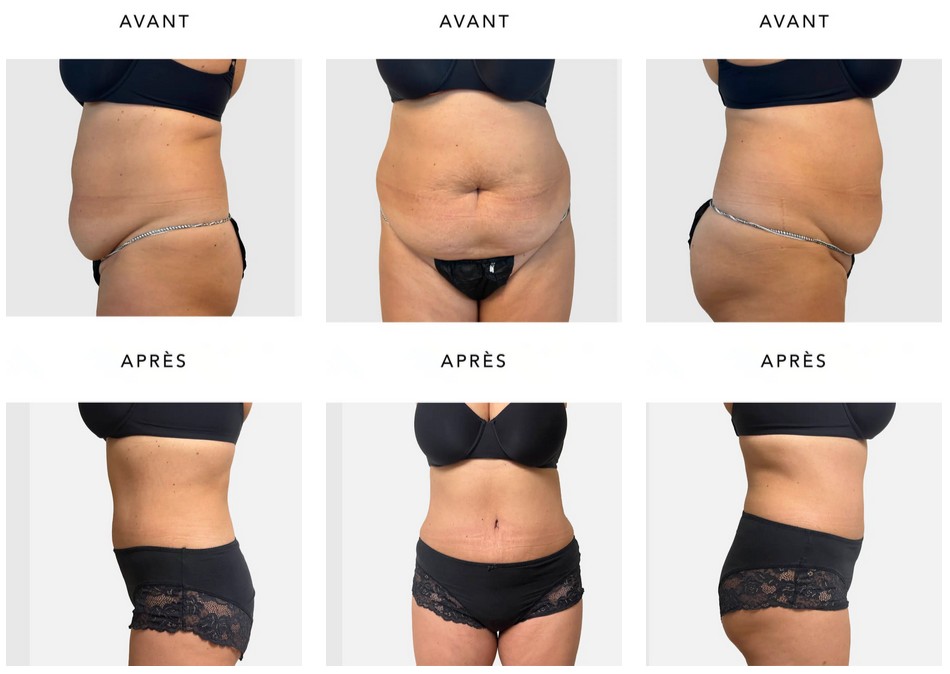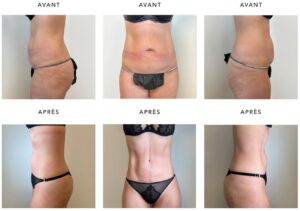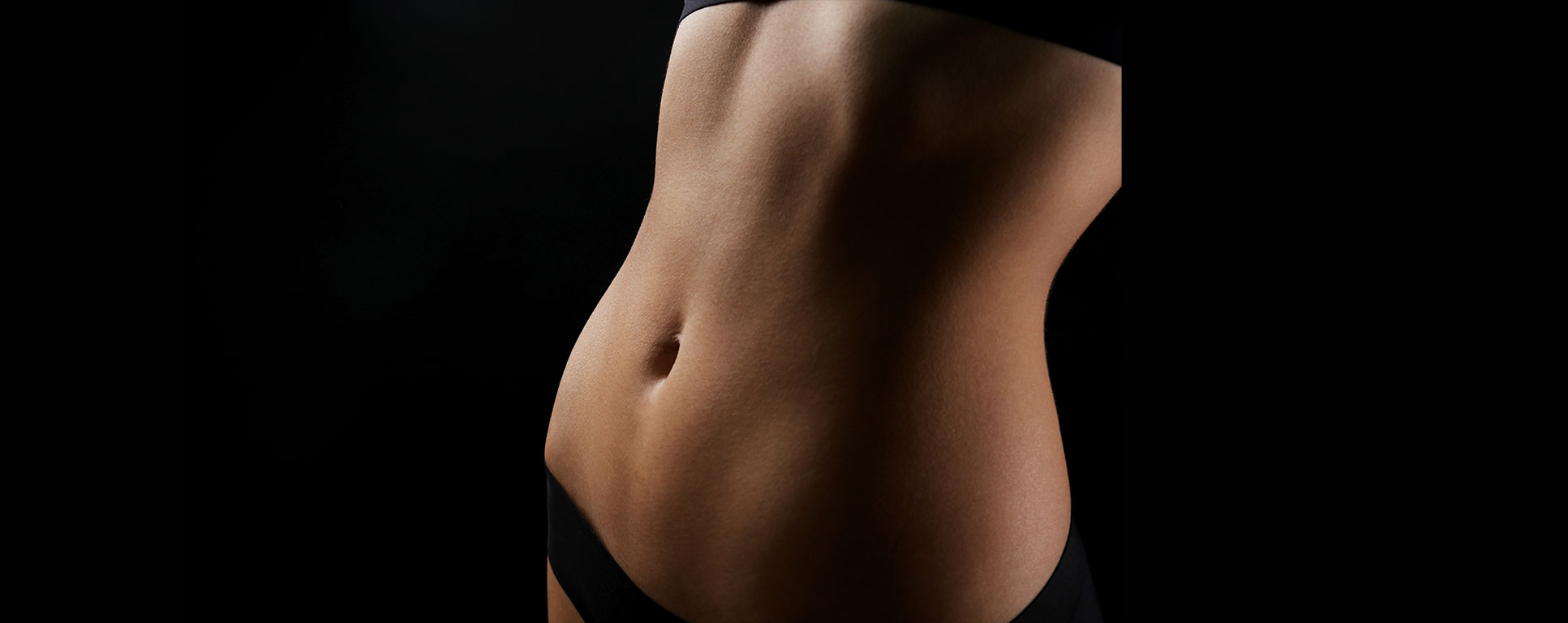
Tummy tuck or abdominoplasty
After pregnancy, especially multiple pregnancies or significant weight loss, excess skin and fat sometimes remain in the abdominal area. Excess abdominal skin is often accompanied by stretch marks, and the abdominal muscles may be stretched (diastasis). Unfortunately, it is not possible to “smooth” the skin of the abdomen and achieve firm skin through exercise, creams, or a change in diet. In these cases, a tummy tuck, also known as abdominoplasty, is the solution to this problem.
Aftercare
Anaesthesia
Costs
Length
Work
Risks
Sport
Treatment
How is a tummy tuck performed?
Before the procedure
During the initial consultation, we will ensure that a tummy tuck is right for you. To do this, we will ask you questions about your general health and measure your body weight, height, body fat percentage, the thickness of your subcutaneous fat layer, and whether you have any hernias in the abdominal area. The areas to be treated are marked and shown to you in front of a mirror. We will inform you about the surgery, discuss any additional tests required for the operation, explain the types of anesthesia available, and give you an overview of the various stages of the healing process. In order not to jeopardize the wound healing process, it is strongly recommended that you do not smoke for about 14 days before and after the operation.
During the procedure
Just before the operation, we will draw the exact areas of skin and fat to be removed while you are standing. A photo documentation is also carried out beforehand. The scar will be located in the area of the caesarean section scars and will therefore be covered by underwear or a bikini. The classic abdominoplasty procedure takes about 2 to 3 hours under general anesthesia, less time for a mini abdominoplasty. The duration depends on the amount of skin and fat to be removed. In a classic tummy tuck, the navel is repositioned. We use a special technique that completely hides the scar at the level of the navel.
After the procedure
You will wear a compression garment for at least 6 weeks. During the first 3 weeks, you should not put too much strain on the areas of tension in the lower abdomen. For this reason, you should adopt a curved posture and make sure you only sleep on your back. If you suffer from constipation after the procedure, mild laxatives and a suitable diet will help. Exercise is only allowed after 8 weeks. Good scar care with specific creams, silicone patches, and massages is also recommended after 4 weeks. To ensure a stable result after the procedure, it is important not to plan any major weight changes after the procedure.
Risks and side effects
Abdominoplasty can cause bruising, swelling, and fluid accumulation (seroma). Sensory disturbances and scar problems are also possible. Thrombosis and embolisms are very rare.
Before and after gallery
General information
A tummy tuck or abdominoplasty involves removing excess skin and fat from the abdomen. There are three main types of abdominoplasty: Mini abdominoplasty, where the skin and fat of the abdomen are prepared up to the level of the navel. The navel is not repositioned in this case. Classic abdominoplasty, in which the abdominal skin and fat layer are prepared up to the level of the rib cage and the navel is repositioned. T-shaped abdominoplasty, in which a classic abdominoplasty is combined with an additional vertical incision.
Before and after videos
An example of tummy tuck, hip and back liposuction and hip dip lipofilling with the PAL microaire technique
Prices
| Procedures | Price |
|---|---|
| MINI-ABDOMINOPLASTY | Starting at 5'000.- under LA |
| COMPLETE ABDOMINOPLASTY | Starting at 12'000.- |
Contact us
Do you have any questions or would you like to make an appointment? You can write us your request via our contact form or call us on +41 21 900 05 09. We look forward to your visit!

